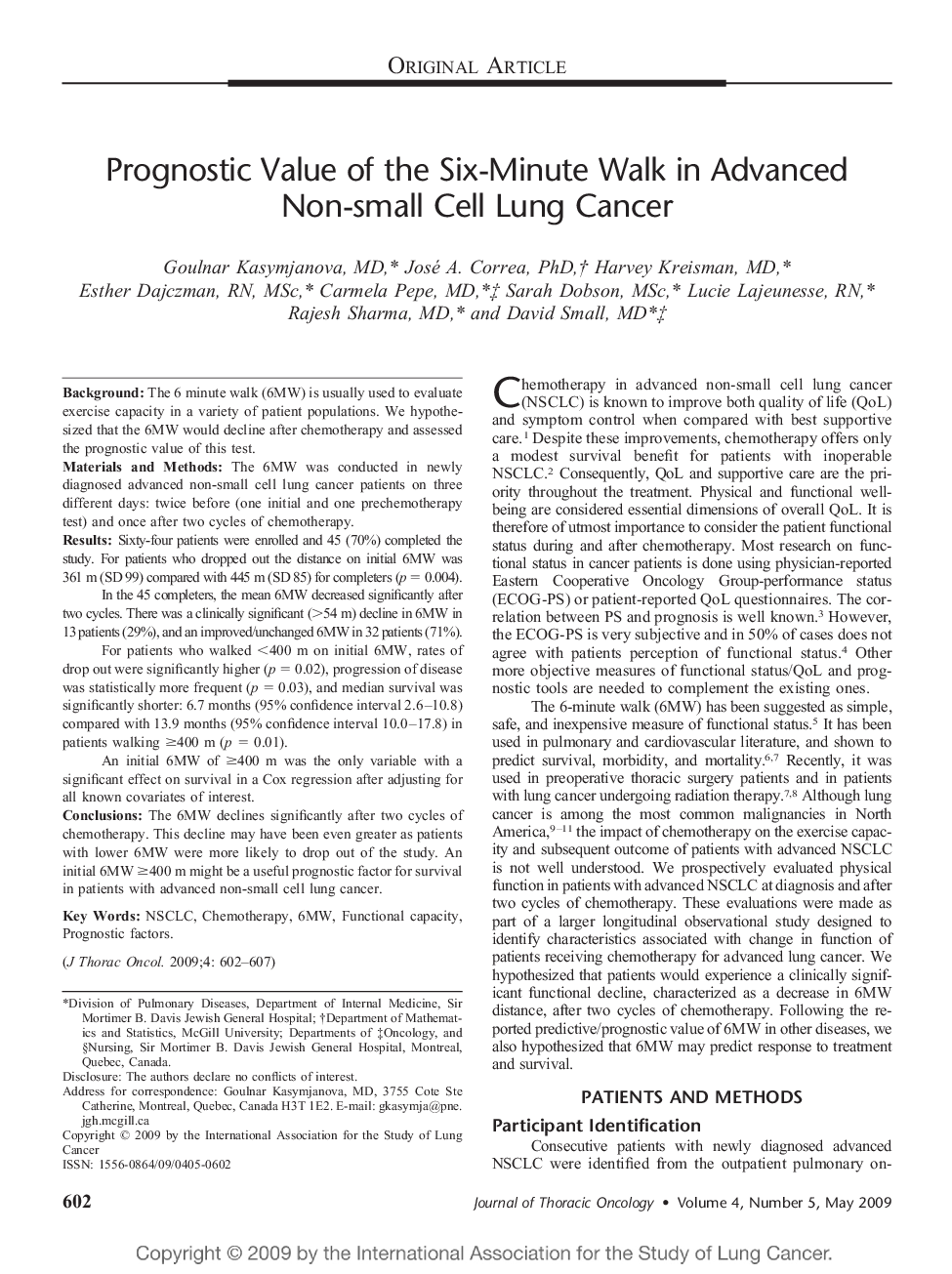| Article ID | Journal | Published Year | Pages | File Type |
|---|---|---|---|---|
| 3991462 | Journal of Thoracic Oncology | 2009 | 6 Pages |
Background:The 6 minute walk (6MW) is usually used to evaluate exercise capacity in a variety of patient populations. We hypothesized that the 6MW would decline after chemotherapy and assessed the prognostic value of this test.Materials and Methods:The 6MW was conducted in newly diagnosed advanced non-small cell lung cancer patients on three different days: twice before (one initial and one prechemotherapy test) and once after two cycles of chemotherapy.Results:Sixty-four patients were enrolled and 45 (70%) completed the study. For patients who dropped out the distance on initial 6MW was 361 m (SD 99) compared with 445 m (SD 85) for completers (p = 0.004).In the 45 completers, the mean 6MW decreased significantly after two cycles. There was a clinically significant (>54 m) decline in 6MW in 13 patients (29%), and an improved/unchanged 6MW in 32 patients (71%).For patients who walked <400 m on initial 6MW, rates of drop out were significantly higher (p = 0.02), progression of disease was statistically more frequent (p = 0.03), and median survival was significantly shorter: 6.7 months (95% confidence interval 2.6–10.8) compared with 13.9 months (95% confidence interval 10.0–17.8) in patients walking ≥400 m (p = 0.01).An initial 6MW of ≥400 m was the only variable with a significant effect on survival in a Cox regression after adjusting for all known covariates of interest.Conclusions:The 6MW declines significantly after two cycles of chemotherapy. This decline may have been even greater as patients with lower 6MW were more likely to drop out of the study. An initial 6MW ≥400 m might be a useful prognostic factor for survival in patients with advanced non-small cell lung cancer.
